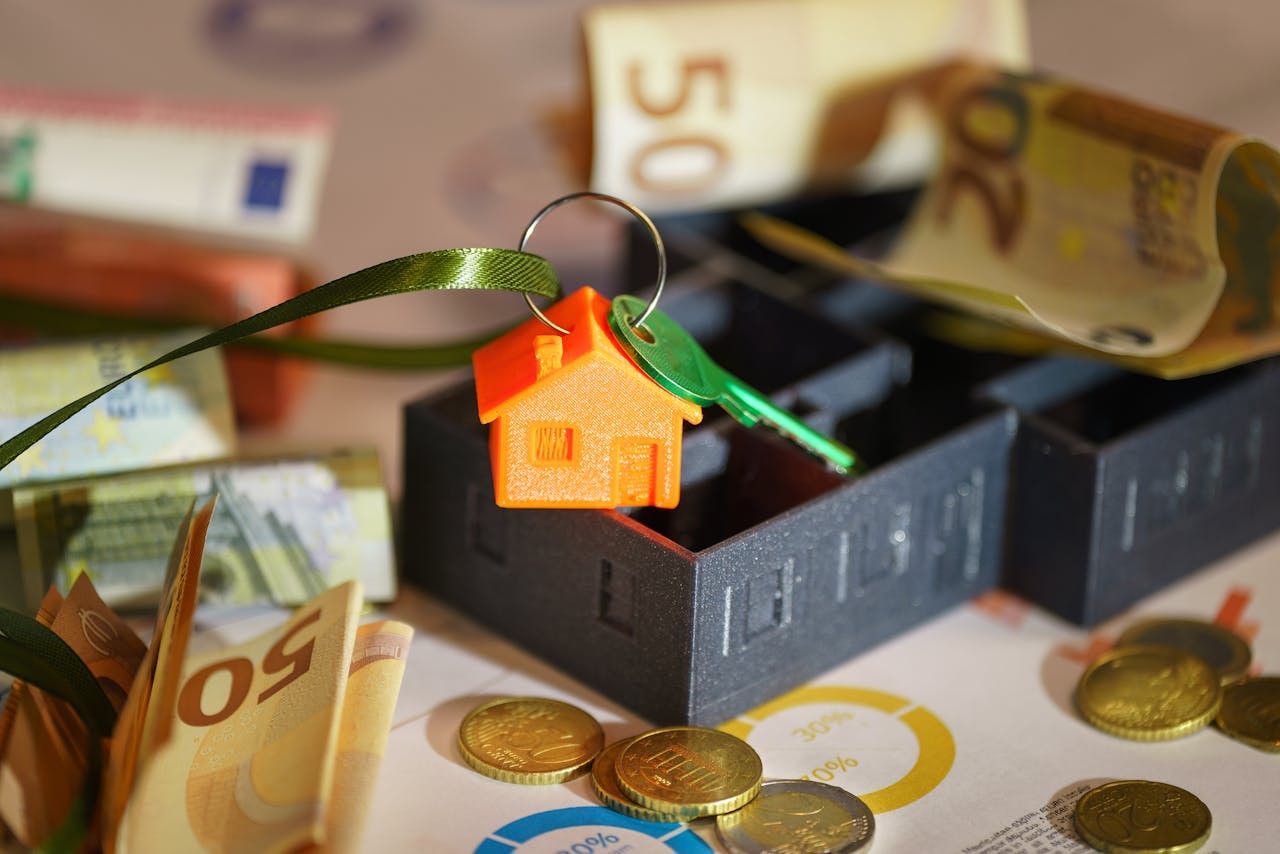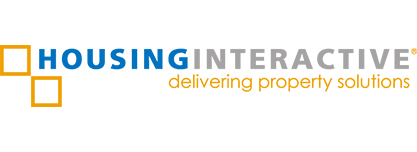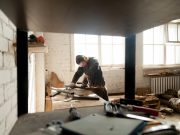For real estate investors specializing in acquiring properties requiring substantial renovations, the After-Repair Value (ARV) is a fundamental concept. It represents the estimated market value of a property once all necessary repairs and improvements have been completed. Understanding ARV in real estate is not merely beneficial; it’s a critical safeguard against overpaying for distressed assets. By accurately estimating the property’s after-repair value, investors can set a maximum limit for their initial investment. This ensures the potential profit margin remains attractive, even after accounting for renovation costs. This metric is particularly vital for strategies like fix-and-flip, where the goal is to purchase a suitable rental property below its potential market value, renovate it, and then sell it for a profit, as well as for wholesaling, where the ARV helps determine the assignment fee a buyer might be willing to pay.

What Does After-Repair Value Mean?
At its core, the After-Repair Value represents the estimated value of a property once all planned repairs, renovations, and improvements have been completed. Think of it as the “finished product” price tag. It’s the estimated selling price the property could command in the current market after it has been brought up to a desirable condition.
Intuitive Breakdown:
- After: Represents the completion of all planned work.
- Repair: Includes fixing damages and addressing any deficiencies.
- Value: The estimated market price a buyer would pay.
ARV in real estate is an estimation rather than a guaranteed sale price. It relies on current comparative market analysis and anticipated improvements. This metric is crucial for investors who flip houses, buy-and-hold investors aiming to boost their return on investment (ROI) by enhancing properties to increase the rental income generated, and lenders providing short-term financing for rehab projects. The gap between the distressed property’s current lower value and its after-repair value highlights the potential profitability for investors.
Why ARV Matters: Tangible Benefits for Every Real Estate Player
Knowing a property’s after-repair value is necessary for people in real estate. Investors use it to see if they can make money fixing up a house and selling it. Lending institutions that provide financing for these fixer-upper properties also need to understand the ARV to ensure the security of their loans. Even homeowners planning to renovate should grasp the ARV concept to evaluate whether their upgrades will effectively enhance their home’s value. The after-repair value helps everyone understand the future value of a property after it’s been fixed.
For Real Estate Investors and House Flippers
The Foundation of Profitability. The After-Repair Value is the cornerstone of any successful real estate investment strategy for those looking to buy, renovate, and sell properties. By comparing the anticipated ARV with the initial acquisition cost and the projected expenses for repairs, investors can accurately gauge the potential profit margin. A meticulously calculated ARV is essential for making informed go/no-go decisions on potential deals. Furthermore, it’s a critical input in determining the Maximum Allowable Offer (MAO), preventing overpayment, and safeguarding profitability. Lenders specializing in fix-and-flip financing depend on a reliable ARV to evaluate the loan-to-value (LTV) ratio and the overall risk associated with funding the project. Ultimately, a realistic ARV dictates the scope and budget of renovations, guiding investors to allocate resources wisely on improvements that maximize returns.
For Homeowners
Enhancing Property Valuation and Financial Planning. While property owners may not be directly involved in house flipping, understanding the potential After-Repair Value of their homes can be immensely beneficial, particularly when planning major renovations. By recognizing how improvements such as kitchen or bathroom remodels, or even structural enhancements, could influence their property’s future market value compared to similar properties, they can make informed decisions about which projects to pursue and the appropriate level of investment. Additionally, an increased After-Repair Value resulting from renovations can open up opportunities for refinancing their mortgage based on the enhanced equity. Ultimately, comprehending the long-term investment potential of their property and how specific upgrades contribute to that value is a crucial component of a value-added strategy in building wealth through homeownership.
For Lenders
Assessing Risk and Ensuring Loan Security. Financial institutions lending for property acquisition and renovation prioritize the after-repair value during loan application assessments. The After-Repair Value is a key determinant in calculating the loan-to-value (LTV) ratio, a primary indicator of the loan’s risk profile. A higher After-Repair Value relative to the maximum loan amount signifies a lower risk for the lender, providing greater security for their investment. Consequently, a well-substantiated ARV is paramount for borrowers seeking financing for properties requiring repairs or improvements.
The Art and Science of Calculating After-Repair Value
To find the After-Repair Value, you mostly look at what similar, already fixed-up houses have recently sold for. Calculating the After-Repair Value involves market analysis and estimation. While no absolute formula exists to predict the property’s precise future selling price, the most dependable method requires analyzing comparable sales data, commonly known as ‘comps’.
What Makes a Good Comparable Sales (“Comps”)?
- It’s in the same neighborhood.
- It’s about the same size after your repairs.
- It has the same number of bedrooms and bathrooms.
- It’s in the condition your house will be after fixing it up.
- It sold in the last 3-6 months.
How to Find and Use Comparable Sales Data (“Comps”)?
- Check online real estate sites.
- Ask a local real estate agent – they know the market.
- Look at the districts’ records and appraisal data.
Making Adjustments:
Since no two houses are the same, adjust the Comparable Sales prices (“comps”).
- If a “comp” has something your house will have that it doesn’t, add a little to its asking price.
- Subtract a little, if a “comp” has something your house won’t have.
- Think about things like extra bathrooms, bigger yards, and the quality of the updates.
Other Ways to Value Quickly:
- Annual Rental Value: If you’re planning to lease the property, look at the rental rates of similar properties nearby to determine the potential rental income.
- Building Cost: While considering the cost of constructing new homes can provide insight, it is generally not the primary method for calculating After-Repair Value in house flipping.
Calculating the After-Repair Value (ARV)
Calculating the After Repair Value is crucial for real estate investors, especially those involved in fix-and-flip projects. After-Repair Value (ARV) represents an estimate of a property’s worth once all necessary repairs and renovations are completed. Here’s a detailed guide on how to calculate ARV:
A. The Basic After-Repair Value Formula:
The most straightforward way to think about the After-Repair Value is:
| ARV = Current Property Value + Value Added by Renovations |
However, determining the “Current Property Value” and the “Value Added by Renovations” requires a more detailed process. The most reliable method involves using comparable sales (“comps”).
Step-by-Step Guide to Calculating After-Repair Value using Comps:
1. Identify Comparable Properties (Comps):
- Identify 3-6 comparable properties that have recently sold, ideally within the last 3-6 months, in the same locality or a closely similar area as the property you will renovate.
- These comps should be as similar as possible to the subject property in its projected condition after renovations. This means you’re looking for properties that have already been renovated to a similar standard you envision for your project.
Key characteristics to match include:
| Location: Same or very close proximity. |
| Size: Equivalent living area with a focus on the above-ground space. The lot size should also be proportionate. |
| Features: They have the same number of bedrooms and bathrooms. Consider significant amenities like garages, pools, fireplaces, etc. |
| Condition: The condition of the comps after repairs should closely align with the expected finished state of your subject property. |
| Sale Date: Recent sales data, ideally within the last 3-6 months, is crucial for reflecting current market conditions. |
| Style/Age: Similar architectural style and age of the properties. |
2. Find the Average Price per Square Foot of the Comps:
- After compiling your list of comparable properties, determine each one’s selling price and total living area.
- Calculate the price per square foot for each comp by dividing its selling price by its square footage:
| Price per Square Foot = Selling Price / Square Footage |
- Average the price per square foot of all your chosen comps.
3. Calculate the After-Repair Value:
- Multiply the average price per square foot of the comps by the square footage of your subject property after renovations:
| ARV = Average Price per Square Foot of Comps × Subject Property’s Square Footage (Post-Renovation) |
B. Alternative After-Repair Value Formula:
1. The “Estimated Increase in Value” Strategy
The Estimated Increase in Value is the anticipated growth in a property’s market value following renovations. While inherently a projection and not a guarantee, this figure is important for estimating the After-Repair Value and aids investors in understanding the potential return on investment by comparing the property’s present value with its expected value after improvements. Though less precise without the comp analysis, another way to think about After-Repair Value is:
| ARV = Current Property Value + Estimated Increase in Value Due to Renovations |
However, determining the “Estimated Increase in Value” is subjective and best informed by the comp analysis.
2. The 70% Rule
In real estate flipping, the “70% rule” suggests you should never pay more than 70% of a property’s After-Repair Value” minus the estimated renovation costs. This rule helps investors build a margin for potential costs, market fluctuations, and profit.
Many real estate investors utilize the “70% Rule” as a quick guideline to determine the maximum property purchase price they should offer for an investment property to ensure profitability after repairs:
| Maximum Allowable Offer (MAO) = (ARV × 70%) – Estimated Repair Costs |
If you’re not entirely comfortable with calculating repair costs, obtain quotes from contractors before making an offer. Perhaps you’re unsure about evaluating a property’s worth on your own. In such cases, enlisting the assistance of a local real estate agent is invaluable.
Important Considerations for Accurate After-Repair Value Calculation:
| Accurate Renovation Estimates: Obtain detailed quotes from contractors for all planned repairs and upgrades. Underestimating these costs will skew your profitability calculations. |
| Market Conditions: Understand the current real estate market trends in your area. Is it a buyer’s or seller’s market? Are prices trending up or down? |
| Quality of Renovations: The quality of your materials and workmanship will impact the final perceived value. Buyers are often willing to pay more for high-quality finishes. |
| Location Nuances: Even within the same neighborhood, subtle differences in school district boundaries, proximity to specific amenities, and street appeal can affect values. |
| Professional Appraisal: Consider hiring a real estate professional appraiser for a more formal and objective valuation. |
Calculating After-Repair Value involves analyzing recent sales of comparable, renovated properties and carefully estimating the impact of your planned renovations on the property’s market valuation. Relying heavily on accurate comp analysis is the most reliable way to determine a realistic ARV for your investment property.
What Makes Your Fixed-Up House Worth More?
Lots of things decide how much your renovated house will sell for. Here are the main ones:
| Location: | Where your property is located is the biggest piece of the puzzle. Think about the neighborhood’s reputation – are the schools good? Is it safe? Are there parks, shops, and restaurants nearby? Is it easy to get around? A nicely renovated house in a great area will always be worth more than the same house in a less desirable spot. Keep an eye on local market trends too – is the area getting more popular? Is the demand high? Is the economy doing well? |
| Think About It: | Two identical fixer-uppers can have very different final values. The one in a trendy, up-and-coming neighborhood with lots of interest will likely sell for way more after renovation than the other in a more rural or less popular area. |
| The Fix-Up Itself: | How much you fix and how well you do it is key. You have to fix the big stuff like the roof and foundation. But new kitchens and bathrooms, fresh paint, nice floors, and good landscaping make a big difference to buyers. Use good materials and hire good workers – buyers will pay more for quality. |
| The Current Market: | The housing market is always changing. Interest rates, how easy it is to get a loan, and how many houses are for sale all affect prices. If there aren’t many houses for sale, your ARV might be higher. If there are lots of houses, it might be lower. Talk to local agents to know what’s going on. |
| Size and Layout: | The dimensions and arrangement of the house are significant factors. A good, functional floor plan with the right number of bedrooms and bathrooms for the area will usually be worth more. |
| Extra Stuff: | Certain extras can make your property more appealing and boost its value. Things like a garage, a pool, a fireplace, and energy-efficient upgrades can all add to the ARV. What buyers want in these extras depends on where you are. |
Watch Out! Common After-Repair Value Mistakes to Avoid
Getting the After-Repair Value wrong can cost you big time. It takes careful work and keeping your emotions out of it. Here are some common traps to avoid:
| Bad “Comps”: | If you don’t compare your house to similar ones sold recently, your ARV won’t be right. Find good matches for size, location, and finished condition. |
| Wrong Adjustments: | Don’t just guess how much more or less your house is worth compared to the “comps.” Use real market info, not just what you hope for. |
| Over-Excited About Reno: | It’s easy to think your renovations will make the house super valuable, but be realistic about what buyers in your area will pay for those upgrades. |
| Ignoring What’s Happening Now: | The housing market changes. If the market is slowing down or interest rates are rising, these factors will inevitably impact your ARV. It’s essential to stay updated with the latest market information to ensure your calculations remain accurate and relevant. |
| Loving the House Too Much: | If you’re an investor, don’t let your feelings about a house make you think it’s worth more than it is. Keep your emotions out of your ARV calculations and stick to the data. |
| Forgetting Extra Costs: | Even if your ARV is right, remember all the other costs like your mortgage payments, insurance, and property taxes while you fix it up, and what it costs to sell. These can change how profitable the deal is. |
Nailing Your After-Repair Value: Practical Tips for More Accurate Estimates
Getting a reliable handle on the After Repair Value (ARV) is achievable with a smart approach and doing your homework. Here’s how to boost your accuracy:
| Team Up with the Locals | Talk to Experienced Real Estate Agents. Agents who know your target area inside and out are goldmines of information. They’ve seen recent sales, know what’s hot, and understand what buyers in that neighborhood are searching. They can help you find the right “comps.” |
| Consider a Pro’s Insight | Consider a Professional Appraiser. Hiring a professional appraiser is essential for an unbiased assessment. They specialize in analyzing the market and determining a property’s true value. |
| Become a Market Detective | Do Your Research. Stay informed about what’s selling, how many houses are on the market, and what’s happening with the local economy. Check online, go to local real estate events, and chat with other people in the business. |
| Better Safe Than Sorry | Lean Towards a Lower Estimate. When you’re guessing the ARV, it’s usually smarter to be a little on the low side. Overestimating can lead to making bad investment choices. |
| Keep Good Notes | Write Everything Down. Document all the comparable properties you examined, note the price adjustments made, and explain the reasons behind those adjustments. This will help you remember your thinking and back up your ARV. |
| Get Different Viewpoints | Don’t Just Ask One Person. Talk to different people, agents, salespersons, and brokers, look at online data, maybe even chat with contractors about how much value certain renovations might add. Getting various opinions can give you a more complete picture. |
Using After-Repair Value to Make Smart Money Choices
The After-Repair Value is more than just a figure; it’s a strategic tool that guides real estate investors in making sound financial decisions. By understanding the ARV, investors can effectively assess the profitability of their investments, ensuring they allocate their resources wisely and avoid overpaying for properties.
Finding Your Top Price: The MAO Formula
The After-Repair Value is a big part of the Maximum Allowable Offer (MAO) formula. This formula tells you the most you should pay for a property, including fixing it up, and still make the profit you want. Here’s how it works:
Knowing the ARV helps you assess how much you can offer for a house and make money. For example, if a house is worth Php300,000 after repairs, you want to make 20%, and repairs cost Php50,000, your Maximum Allowable Offer (MAO) is:
| MAO = What It Will Be Worth Fixed Up (ARV) × (1 – Your Profit Goal) – How Much Fixing It Will Cost |
| MAO = Php300,000 × (1 – 0.20) – Php50,000 |
| MAO = Php300,000 × 0.80 – Php50,000 |
| MAO = Php240,000 – Php50,000 |
| MAO = Php190,000 |
Using the Maximum Allowable Offer helps you not pay too much and keeps your profits safe.
Will You Make Money? Figuring Out Your Profit
You can see if a deal is worth it if you know the After-Repair Value. Just compare the ARV to all the money you’ll spend: buying, fixing, holding, and selling. A good ARV gives you a clear idea of how much you could make.
Offer with Confidence: Using Your Numbers
When you want to buy a property, your After-Repair Value research helps you make a smart offer. You can show the seller what other fixed-up houses are selling for and explain why your offer makes sense.
What is a Good ARV in Real Estate?
If an After-Repair Value surpasses the purchase price, estimated repair costs, renovation expenses, and holding costs, the rehabilitation project could be financially viable. However, if it falls short, an investor might need to consider offering a lower bid on the property or seeking a more suitable investment opportunity.
After-Repair Value: Your Smart Move in Real Estate
The After Repair Value (ARV) is a vital metric for real estate investors, as it helps determine the potential profitability of a property investment. By calculating the ARV, investors can assess whether a deal is promising or if it poses a risk of financial loss. Many use the 70% rule alongside ARV to establish the maximum purchase price, ensuring investments remain lucrative. Mastering After-Repair Value calculations is beneficial not only for investors and house flippers but also for property owners considering renovations and financial institutions evaluating loan risks. Understanding ARV allows stakeholders to make informed decisions, capitalize on profitable opportunities, and navigate the real estate market effectively. For those eager to discover profitable real estate deals, HousingInteractive offers expertise in identifying property potential and crafting investment strategies. Contact us today for guidance on maximizing your real estate ventures.

























